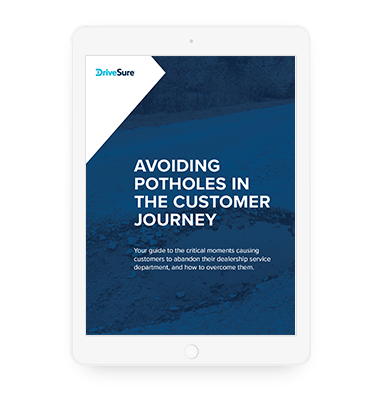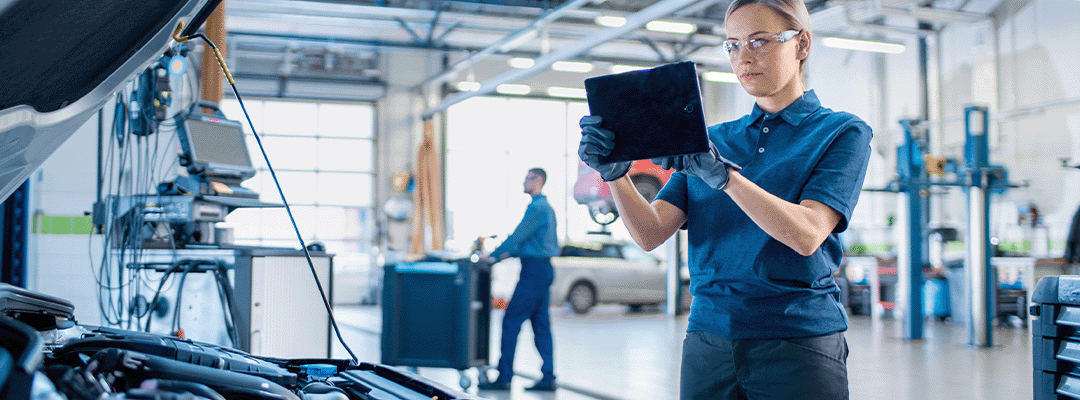This article was originally posted to DrivingSales.com.
According to research by PwC, 73% of customers point to customer experience as an important factor in their purchasing decisions, with 65% noting a positive experience is more influential than great advertising.
But offering a positive experience isn’t as simple as it used to be.
Customers are interacting with your dealership beyond the facility and at all hours of the day. Customers are experiencing your dealership everywhere. And to stay ahead of that shift, many dealers are embracing data-driven strategies and technologies like CRMs to personalize the customer experience.
CRMs provide a massive amount of data. Today’s challenge for dealerships is not a lack of data, but rather, knowing how to act on it.
So how are you supposed to maximize a CRM? How can your dealership use its data to improve the customer experience?
Let’s cover the importance of CRM platforms and then lay out a few tactics you can immediately deploy.
Prepare for the 5 make-or-break moments that can cause service customers to start going elsewhere.
Why do dealerships need a CRM?
Dealerships need CRMs to manage customer communications and be more proactive in their operations.
We’ll expand on this concept later, but data from CRMs can shed important insights about customers that, in turn, help you improve their experience.
Take engagement rates for different communication channels as an example. CRMs tell your dealership how customers prefer to be communicated with by simply looking at which types of messages they open, read, and respond to.
In a similar way, data from your CRM can help you predict which services a customer will need and when they will need them. Not only does this create a better, frictionless customer experience, but it’s also better for your business. And that’s the overarching highlight of CRMs – what’s better for your customers is usually better for your business.

Getting the Most from Your CRM
Maximizing your dealership’s use of a CRM comes down to being proactive. You should always be thinking one step ahead in the customer journey and using your data to personalize the customer experience.
As we’ve mentioned, even loyal customers are likely to leave after a bad experience. So, the more proactive opportunities you can identify in their journey, the better.
Let’s look at an example. When a customer who leases a vehicle through your dealership visits for a service – and their lease ends soon – a strong CRM will flag that information for the user. In this case, your team would know their lease ends soon and use that information to personalize the customer experience.
Instead of letting them go through with the service and then returning a few months later to end their lease, what if you could take care of the customer now? Whether it’s selling them a car, finding them a new lease, or just providing more information about ending the lease, this type of proactive customer service is better for customers and your business.
The other important factor to mention when it comes to CRMs is communications. Getting the most out of your CRM means improving how your dealership communicates. Due to their structure, many dealerships would have asynchronous communications without CRMs. But when dealerships embrace their CRM, they can synchronize communications for customers and team members.
For example, if a customer needs to be given a complete report of their service appointment, that can be created within (and delivered from) a dealership’s CRM. It also gives the customer a direct line to respond to communications. And when team members need to communicate between each other about a customer, those notes can be exchanged on the customer’s profile within the CRM.
The real value here is centralizing information. When you maximize your CRM, you’re not relying on verbal communications to get key points across. And all communications are generally stored in a centralized location for easy reference.
Doing More with Data at DriveSure
In our mission to help dealerships become the only place your customers depend on for maintenance, tires, and repairs, we are constantly thinking about how to best use data to personalize the customer experience at DriveSure. It’s a big deal to strive for this, but it doesn’t have to be complex. With most of the data you need already at your fingertips, it’s typically a matter of acting on it. Here are some ways DriveSure does that:
- Connecting email and retention: DriveSure measures each dealership’s email collection rate and then 12-month customer retention for customers, segmented by whether the customer’s email address is on file or not. From that, we compare retention rates against those email collection rates. In this example, we see a huge connection between retention and email collection, which tells us dealerships need to focus on increasing their email collection to improve retention.
- Personalizing customer engagement: People don’t respond to most marketing messages because far too many of those messages aren’t focused on being helpful to them. DriveSure gives you a spam-free way to reach your customers exactly when they need you, in a personalized way, and through the method they prefer based on data that’s been collected.
- Sending reminders and notifications: One of the core ways to leverage DriveSure is to send proactive communications based on customer events like service reminders or upcoming benefit expirations. DriveSure enables dealerships to proactively contact customers in a personalized way – addressing their specific needs based on data.
- Centralizing information for customers in a personalized portal: An upcoming feature by DriveSure will allow your customers to scan a QR code on their windshield sticker to access their personalized DriveSure benefits portal. This portal will contain all their DriveSure benefits information as well as simple ways to request roadside assistance or navigate to the dealership’s webpage for scheduling service.
Building a Data-Driven Culture
The highest-performing service advisors we know proactively use their CRM.
They look at their customers coming in tomorrow, review their notes from last time, and strive to personalize their experience.
How many miles is the customer approaching? Did they ask a question last visit that we never answered?
This is the level of detail and care it requires to maximize your CRM. And this is how dealerships can use data to shape their culture, customer experience, and overall business results.
Interested in learning more about how to optimize the customer journey? Check out our guide, Avoiding Potholes in the Customer Journey, to discover the five critical moments you need to plan around.
Master These Moments to Keep Your Customers
Discover the 5 critical moments causing customers to abandon your dealership service department, and how you can overcome them.


